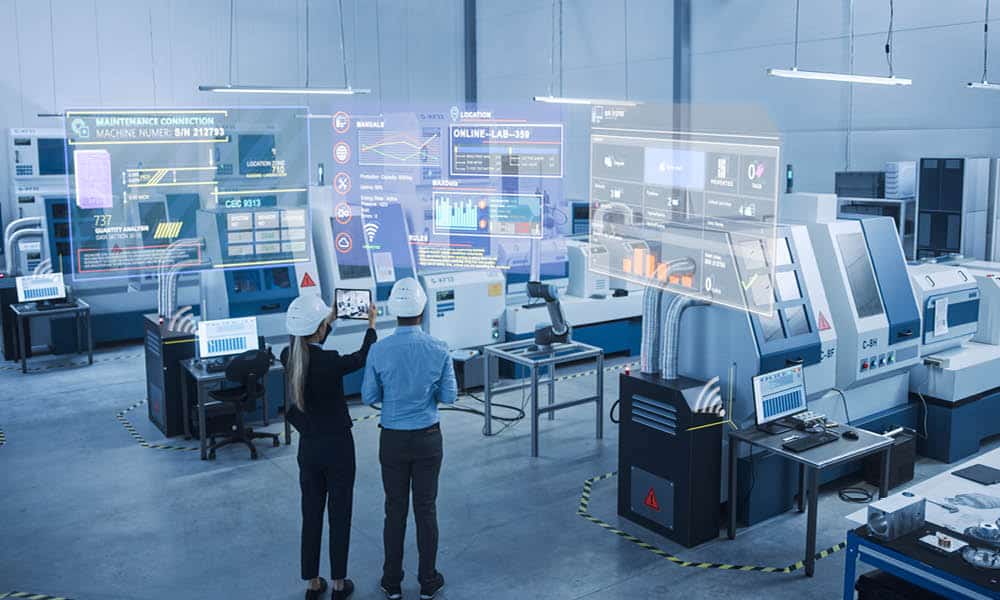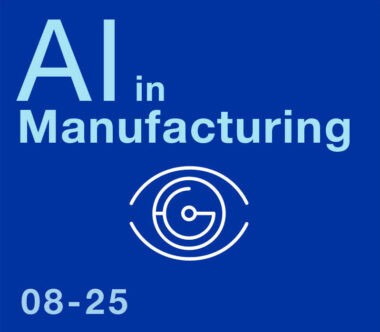The AI Divide: Manufacturing’s Pivotal Moment is Here

As artificial intelligence reshapes manufacturing competitiveness, organizations must act decisively or risk falling permanently behind their AI-enabled competitors.

TAKEAWAYS:
● AI technologies are enterprise ready now, and the benefits are quantifiable. The gap between leaders and laggards is widening.
● Crowd-sourcing innovation at the individual contributor level is highly efficient for finding new solutions to evergreen problems.
● Don’t forget training and enablement – lack of training is an emerging key blocker in accelerating value.
The Rapid Pace of AI Evolution
A few years ago, the adoption of machine learning capabilities by manufacturers was limited. Computer vision models for quality (e.g. defect detection) were a common use-case, but broad adoption was limited by a host of issues, among them: the complexity and cost of training models, the lack of well-structured and organized data, and general hesitance about the technologies themselves by line-of-business leaders due to lack of knowledge and skepticism of ML approaches. Comfort levels increased with exposure, but AI was often looked at as just part of the toolkit available for continuous improvement—not a game-changer.
The emergence of generative AI since late 2022 has increased excitement (and hype) but also hesitance. Generative AI is something different and powerful – at this point surely all have been exposed to consumer apps like ChatGPT, Claude and Perplexity. The potential for how impactful and transformative this technology could be was recognized early on, but proof-points were rare, and there were some very visible failures as well. In manufacturing the smart play has traditionally been to move slowly on new technologies; let others test it and mature until it is production ready.
Generative AI is Production-Ready
Over the last two years the gaps, weaknesses and concerns about generative AI—like hallucinations, security risks, intellectual property concerns and costs—have been identified and for the most part mitigated. Techniques like retrieval augmented generation using knowledge graphs, advances in capabilities like semantic understanding of diagrams/schematics, and now collaborative agents that can seek out information in other systems and synthesize it make generative AI able to get technical details correct. Cloud hyper-scalers provide secure infrastructure and managed services to build enterprise-ready AI applications without fear of their trade secrets and IP being exposed publicly. Costs for generative AI models have dropped significantly with Andreessen Horowitz noting the cost for equivalent performance is decreasing 10x every year (1000x reduction in three years). Generative AI is now enterprise- and production-ready.
AI Value Proof Points Are Here
Public proof points for how impactful AI can be are emerging and the results achieved are impressive in quality, maintenance and production. Beyond these pinpoint use-cases, evidence highlighting the broader impact of generative AI is emerging as well. Early studies showed generative AI could free up ~4 hours/week for employees (the “ugliest hours of work” according to BCG), but how this translated into business value was largely hypothetical. Now we’re seeing rigorous research into generative AI’s benefits. A recent study by P&G and Harvard compared the work of both individuals and teams with AI and without AI. They found that AI accelerated the speed of the work with higher quality outputs. Individuals with AI produced higher quality output faster than teams without AI. The emergence of the AI co-worker is here.
Rethinking Old Ways of Doing Things
Manufacturers are now seeing truly transformative applications. In maintenance, one manufacturer is using generative AI to take sensor data from the line, identify emerging issues automatically, suggest possible root-causes, and what actions to take to resolve the issue. It also identifies the parts needed for repairs, estimates the repair costs, determines if expediting needs to occur, and can automatically create both maintenance work order and purchase order in the ERP system. Future versions already in progress will recommend updates to production schedules to adapt for maintenance issues automatically (with human in the loop oversight).
The emergence of generative AI since late 2022 has increased excitement (and hype) but also hesitance.
In quality, an innovative approach using generative AI to compare just one reference image to a live image for defect detection and/or anomaly detection is showing equivalent accuracy results to traditional ML computer vision models without the heavy burden of training models (having a large number of images, labeling them, and building the models—which can be sensitive to differences in lighting, object alignment, etc.). This approach is proving to be much more flexible, less sensitive to factory floor conditions, and doesn’t require the heavy lift of traditional training workloads. It caught the attention of the CEO of an ~$80b industrial at the recent Hannover Messe, who knows the limits of traditional ML.
At the plant, generative AI is being used to gather the information for the leader’s start of shift meeting, identify the top issues and challenges automatically, and then surface them and potential fixes using the standard process plant management already uses. This shifts the burden on managers/supervisors from “administrivia” to unblocking production for the day. One head of manufacturing technology mentioned having the plant management team (production, maintenance, quality, safety, material management and HR) going from 1-2 hours each in prep time per day to less than 15 minutes in total as a group – allowing them to focus on fixing the most important issues of the day.
A Widening Gap Between AI Leaders and Laggards
The gap between leaders and laggards in adopting AI is becoming well-documented. A recent study by PWC identified AI top performers (who have AI-specific operating models, embed generative AI-powered capabilities throughout their organizations, and have strong AI governance and responsible AI practices) are more than 2x likely to realize value than laggards. Similarly, they identified industries that were best positioned to adopt AI have had revenue growth that has far exceeded others—27% vs. 8.5% in 2024. A recent EY study identified manufacturing as having the highest percentage of workers who viewed AI as a net positive, so the workers are ready.
Lead From the Front
But as Andy Jassy, CEO of Amazon says, “there is no compression algorithm for experience.” Manufacturing leaders (C-suite and VP level) have awareness but are not using AI themselves. According to a recent Manufacturing Leadership Council survey, only 4% of the C-suite, 4% of senior plant leadership, 7% of department leaders and 6% of floor supervisors use AI technology on a regular basis.
If manufacturing leaders want to realize the benefits of AI, they need experience using it. A $150b+ revenue automotive OEM recently shared that they opened access to generative AI models via a generative AI playground to all ~300,000 employees. After enablement training, they saw a 218% increase in experiments and exploration, which led to a 757% increase in production-deployed usage.
Studies found that AI accelerated the speed of work with higher quality outputs; individuals with AI produced higher quality output faster than teams without AI.
Exposure leads to results. Investing in hands-on experience from the top down is the most likely path to transformative new approaches to solving the consistent challenges of manufacturing. If leaders aren’t experiencing, innovating and learning, they will be poorly prepared for disruptive changes to traditional processes. As recently as 2023, manufacturers were expecting significant changes to the workforce from AI—retraining, upskilling, or reassigning—but 65% of manufacturers were not budgeting for AI training.
Manufacturing Stands at a Defining Moment. Act Now.
The choice lying before manufacturers is clear and needs to be made now: accelerate adoption of AI technologies and embrace the change from the top down, or risk losing business to competitors who do. Decisive action can be taken: 1) leaders, including the C-suite, need to use AI technologies every day. One technique that is highly effective is to make each leader and team in the organization answer “how can I use AI to improve”—not “if I can use AI”; 2) providing self-serve AI platforms for all employees, regardless of level, will enable learning capabilities of the technology and how it can help solve business problems. This is a powerful crowd-sourcing mechanism for innovation and problem solving; providing broad exposure, or as one manufacturer phrased it “making AI like oxygen to us”, is a strategic investment and needs to be budgeted; don’t neglect training and enablement. Providing a platform to experiment without also providing examples of the art of the possible and practical how-to guides for hands-on training will slow or limit ideation and therefore benefits; and 3/) encourage the entire organization to rethink their approaches. Work backwards from the problems they need to solve, not the current approach.
AI, and especially generative AI, is a once in a generation transformative technology wave that is just now starting to crest. This is not the time for hesitating and cautious advancement—this approach worked well in the past but will harm you now. Embrace the uplift AI can bring broadly now or risk your competitors doing so and gaining a generational advantage. M
About the author

Danny Smith is Principal Strategist, Artificial Intelligence, AWS Automotive and Manufacturing at Amazon Web Services.